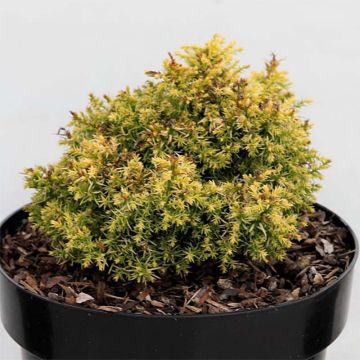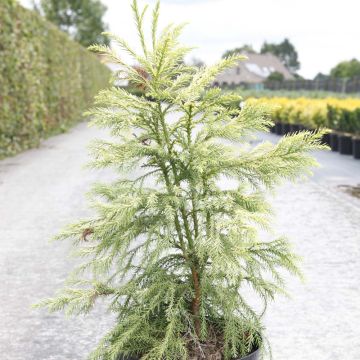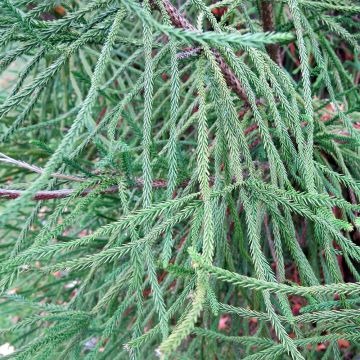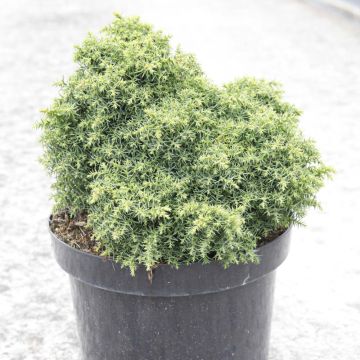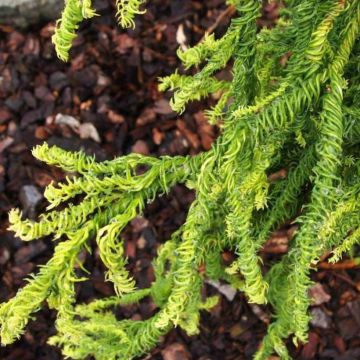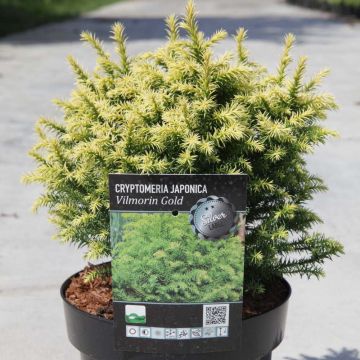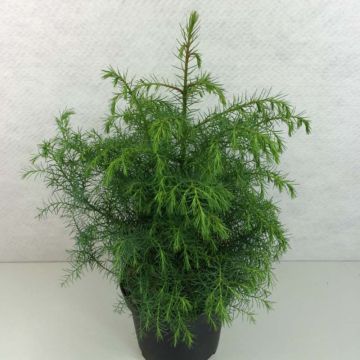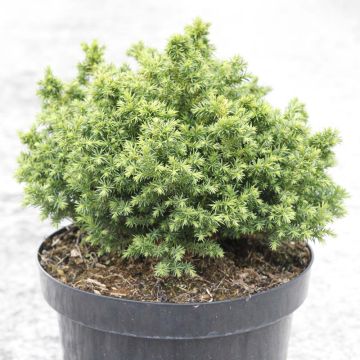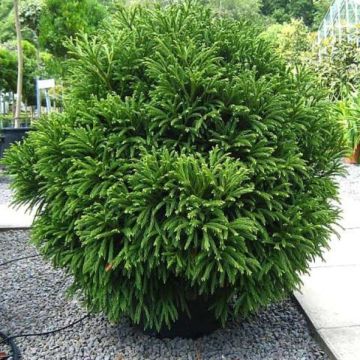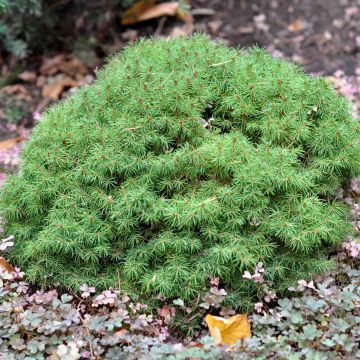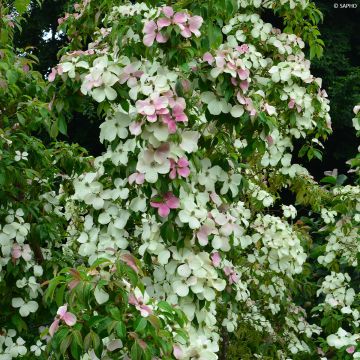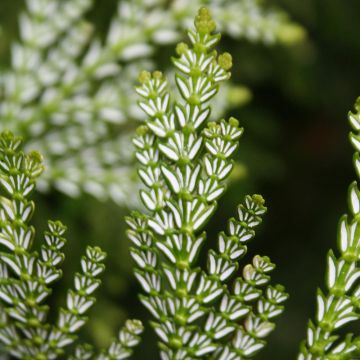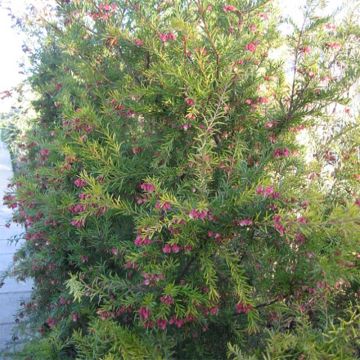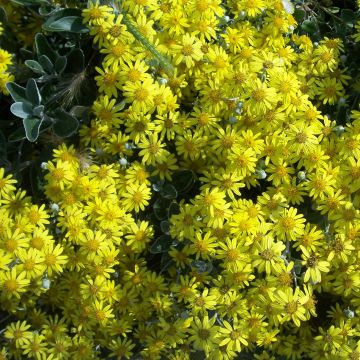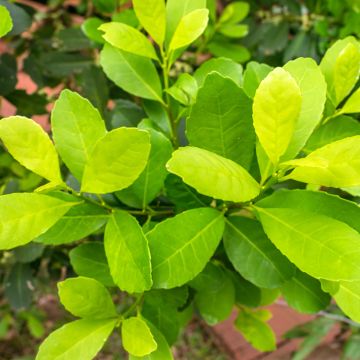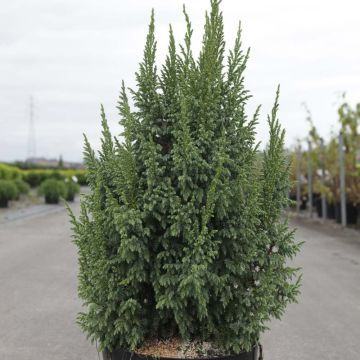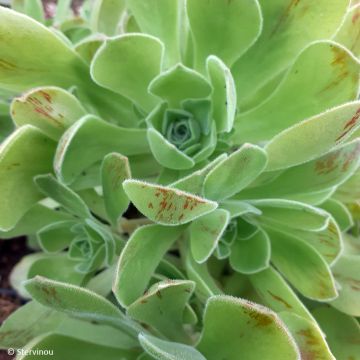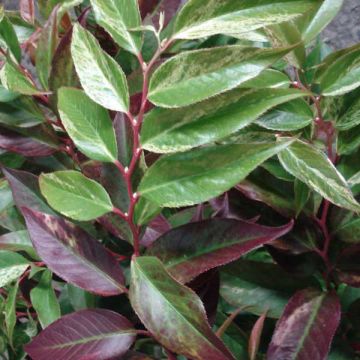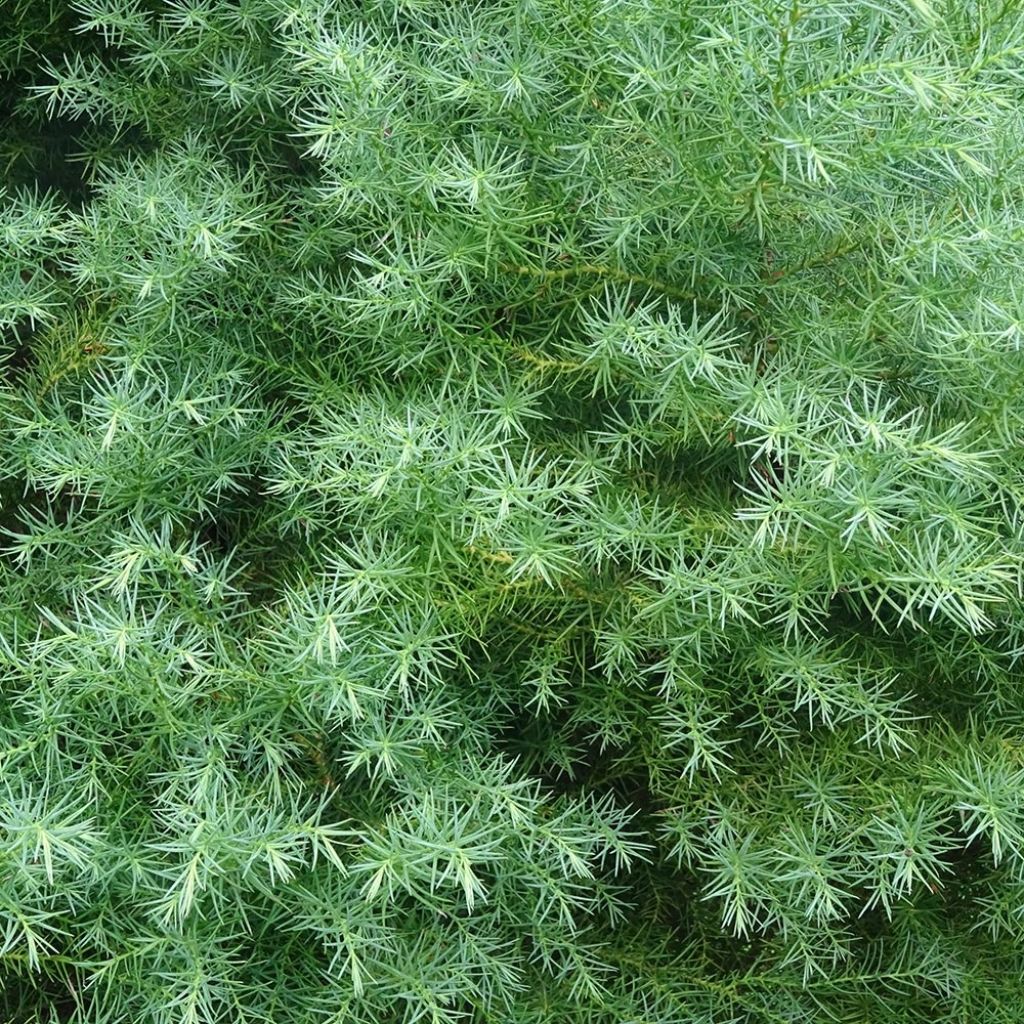

Cryptomeria japonica Elegans - Japanese Cedar
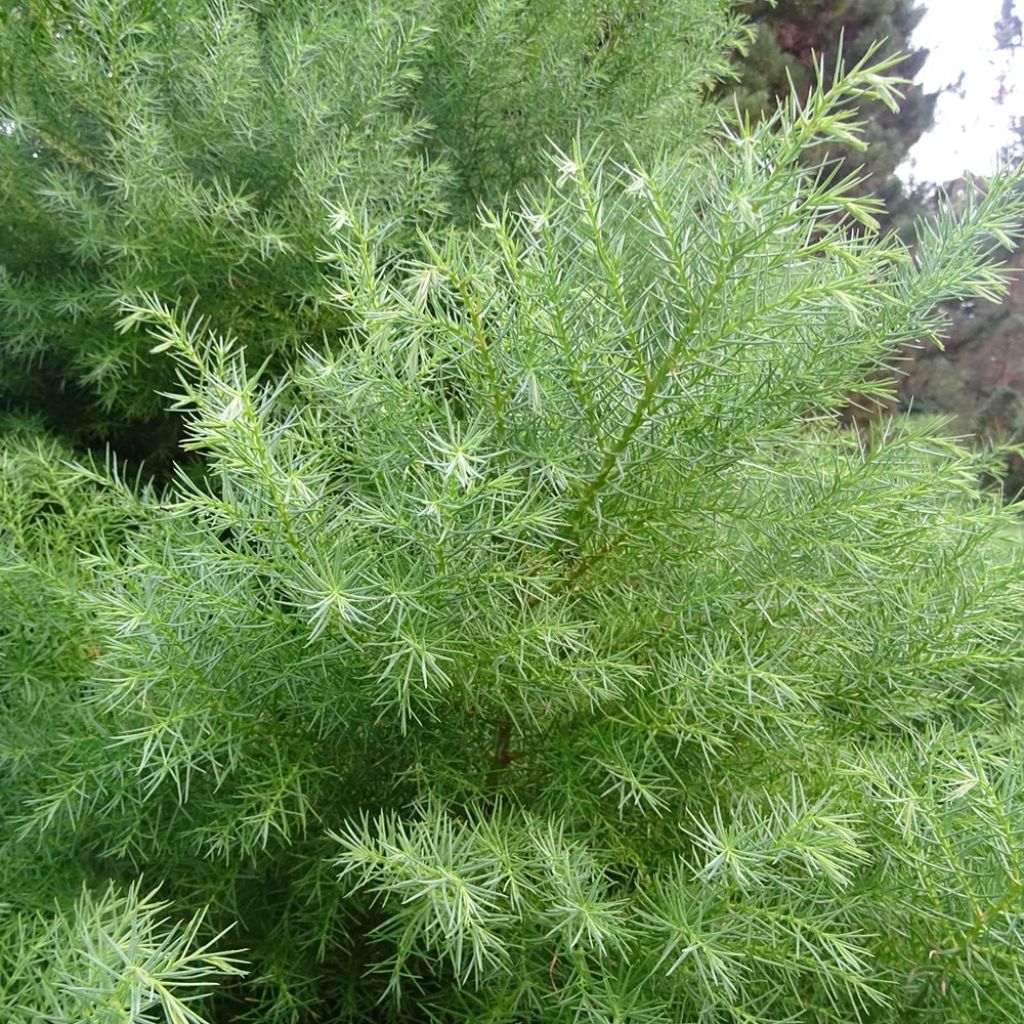

Cryptomeria japonica Elegans - Japanese Cedar
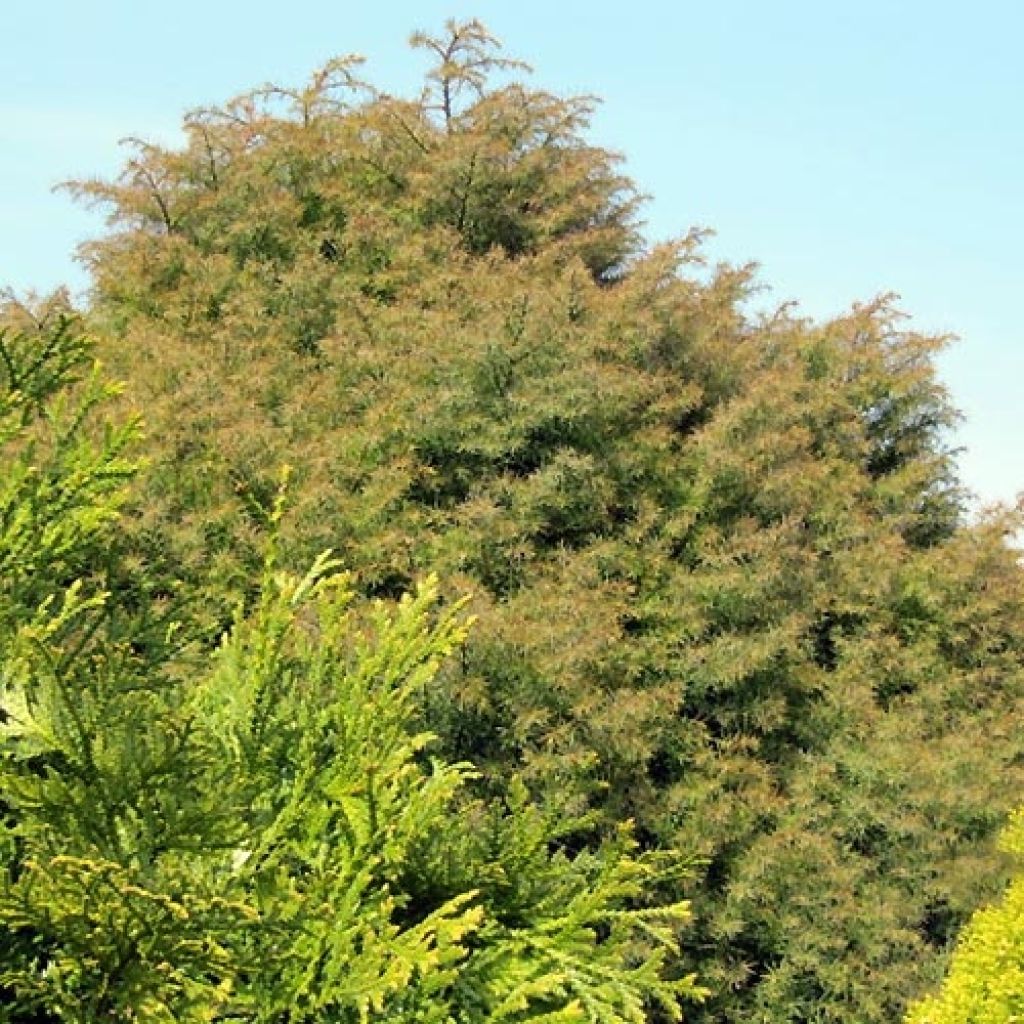

Cryptomeria japonica Elegans - Japanese Cedar
Cryptomeria japonica Elegans - Japanese Cedar
Cryptomeria japonica Elegans
Japanese Cedar, Sugi, Japanese Redwood
This item cannot be shipped to the selected country
Delivery charge from €5.90
More information
Schedule delivery date,
and select date in basket
This plant carries a 24 months recovery warranty
More information
We guarantee the quality of our plants for a full growing cycle, and will replace at our expense any plant that fails to recover under normal climatic and planting conditions.
From €5.90 for pickup delivery and €6.90 for home delivery
Express home delivery from €8.90.
Does this plant fit my garden?
Set up your Plantfit profile →
Description
Cryptomeria japonica 'Elegans' is a variety of Japanese Cedar with moderate growth, whose foliage beautifully colours in autumn and winter. This medium-sized conifer has a widely conical and slightly irregular habit, with semi-trailing branches covered in soft and very gentle foliage, giving it a feathery appearance. Superb in large beds, as a standalone specimen, or to create a green screen, this very reliable variety will grow without difficulty in any well-drained garden soil without excessive limestone, in most not too cold regions.
Cryptomeria japonica is a very large conifer of the taxodiaceae family native to Japan. In its country of origin, this tree is commonly planted around religious temples. It is a species that thrives in a mild oceanic climate, humid all year round and mild in winter. In Asia, this forest tree with sequoia-like appearance can reach up to 60m in height, with a trunk diameter of 4m covered in vertical strips of reddish-brown bark. In our latitudes, it still reaches a height of 30 to 40m. The evergreen foliage of this conifer is composed of curved needles arranged in spirals around the branchlets. The Japanese Cedar has given rise to numerous cultivars selected for their small size, foliage appearance, cold resistance, and better tolerance to our soils and average climates.
The 'Elegans' variety was imported from Japan by Thomas Lobb from Britain in 1854. It is a juvenile form of Cryptomeria japonica that maintains moderate dimensions and its beautiful feathery foliage throughout its life. This conifer has a bushy, widely conical and very flexible habit, as well as dense vegetation. Mature specimens often show an irregular habit, sometimes composed of several overlapping columns if secondary trunks have not been removed in their youth. This small tree, which grows rather quickly during its early years, will reach 6 to 7m high and 3m wide after many years. Its wood is reddish-brown, and it has the beautiful fibrous bark typical of the species, also reddish-brown. Its delicate, non-prickly foliage ranges from a beautiful tender green to a deeper shade in summer and takes on beautiful bronze, copper and brown hues, with violet or bronze-green highlights when exposed to cold. It covers numerous slightly trailing branches. This variety is hardy down to -15°C, but it requires shelter from cold and dry winds and scorching sun. The tree sometimes produces small brown cones.
Cryptomeria japonica Elegans deserves to be better known and planted in gardens, in climates that are not too harsh or too dry. With its personality, discreet elegance, beautiful autumn and winter colours, and moderate growth, it is a perfect plant to bring life to the garden during the dull season. It can be planted in large beds, as a hedge, or as a standalone specimen. It can be associated with dwarf conifers with trailing (Juniperus horizontalis Blue Chip), rounded, or columnar habits, of different colours, or planted as a standalone specimen to mark the curve of a path or a shaded stair. Finally, the architectural qualities of conifers naturally impose themselves in the design of a contemporary garden.
Uses/Properties:
The wood of the Japanese Cedar is pleasantly fragrant, with a beautiful pink-red colour, lightweight but robust and rot-resistant. It is widely used in Japan in all types of construction, both outdoors and indoors.
Report an error about the product description
Cryptomeria japonica Elegans - Japanese Cedar in pictures
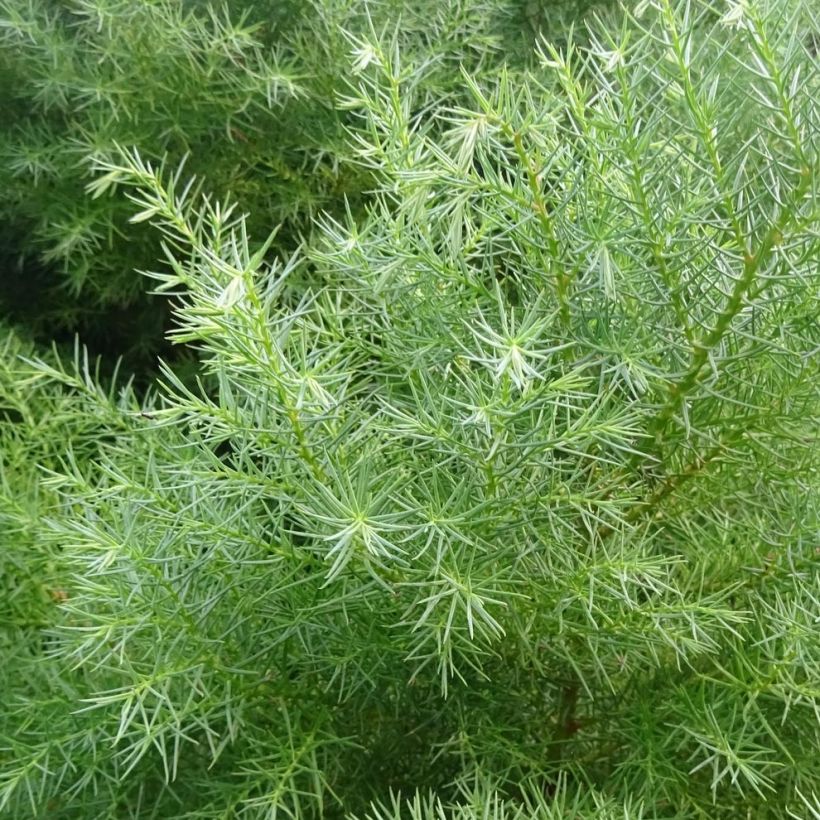

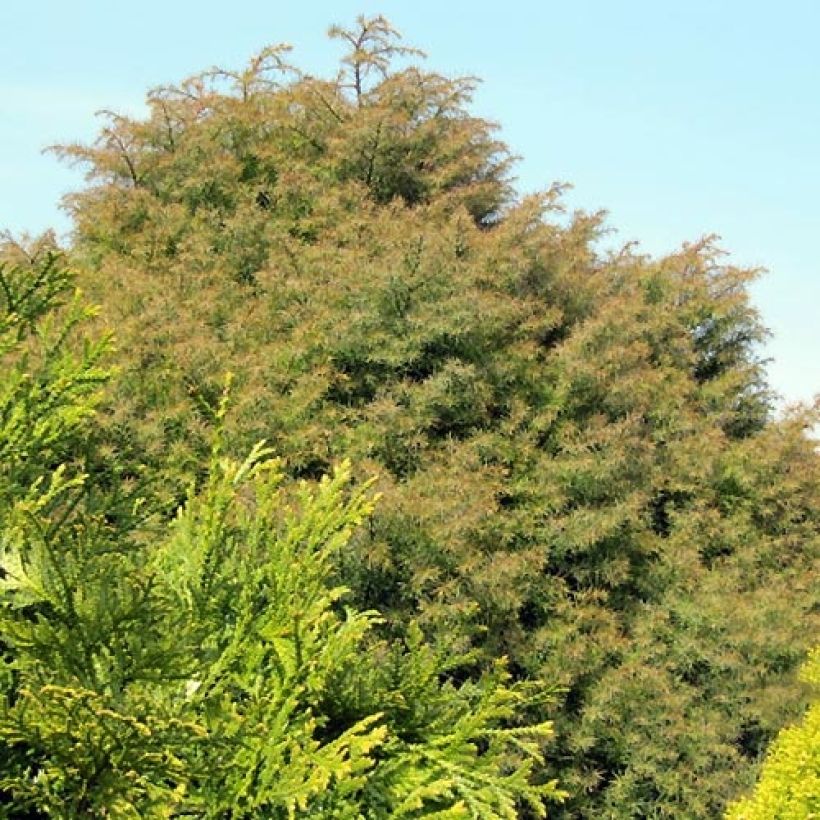

Plant habit
Foliage
Safety measures
Botanical data
Cryptomeria
japonica
Elegans
Taxodiaceae (cupressaceae)
Japanese Cedar, Sugi, Japanese Redwood
Cultivar or hybrid
atteinterespiratoire
Cette plante peut entraîner des symptômes allergiques.
Evitez de la planter si vous ou vos proches souffrez de rhinite saisonnière ("rhume des foins").
Davantage d'informations sur https://plantes-risque.info
Other Cryptomeria
Planting and care
Cryptomeria japonica Elegans is best planted from September to November and from February to June in ordinary, deep, well-worked, not excessively chalky, well-drained, preferably moist, rather fertile, even slightly chalky, neutral or acidic soil. It only dislikes excessively dry or too shallow soils, or on the contrary soils which are heavy and waterlogged in winter. Choose a semi-shaded location, especially in very sunny regions. This variety doesn't like dry and cold winds that scorch its young shoots. Soak the root balls well before planting. Add organic fertiliser at planting and water generously in the first years, and in prolonged drought. Once well established and rooted, this Japanese cedar will manage on its own. Apply a special conifer fertiliser every year in April and cultivate the soil in summer. This conifer is hardy to at least -15°C. Pruning is not necessary, but make sure to keep only one central leader at the top in young plants.
Planting period
Intended location
Care
This item has not been reviewed yet - be the first to leave a review about it.
Evergreen shrubs
Haven't found what you were looking for?
Hardiness is the lowest winter temperature a plant can endure without suffering serious damage or even dying. However, hardiness is affected by location (a sheltered area, such as a patio), protection (winter cover) and soil type (hardiness is improved by well-drained soil).

Photo Sharing Terms & Conditions
In order to encourage gardeners to interact and share their experiences, Promesse de fleurs offers various media enabling content to be uploaded onto its Site - in particular via the ‘Photo sharing’ module.
The User agrees to refrain from:
- Posting any content that is illegal, prejudicial, insulting, racist, inciteful to hatred, revisionist, contrary to public decency, that infringes on privacy or on the privacy rights of third parties, in particular the publicity rights of persons and goods, intellectual property rights, or the right to privacy.
- Submitting content on behalf of a third party;
- Impersonate the identity of a third party and/or publish any personal information about a third party;
In general, the User undertakes to refrain from any unethical behaviour.
All Content (in particular text, comments, files, images, photos, videos, creative works, etc.), which may be subject to property or intellectual property rights, image or other private rights, shall remain the property of the User, subject to the limited rights granted by the terms of the licence granted by Promesse de fleurs as stated below. Users are at liberty to publish or not to publish such Content on the Site, notably via the ‘Photo Sharing’ facility, and accept that this Content shall be made public and freely accessible, notably on the Internet.
Users further acknowledge, undertake to have ,and guarantee that they hold all necessary rights and permissions to publish such material on the Site, in particular with regard to the legislation in force pertaining to any privacy, property, intellectual property, image, or contractual rights, or rights of any other nature. By publishing such Content on the Site, Users acknowledge accepting full liability as publishers of the Content within the meaning of the law, and grant Promesse de fleurs, free of charge, an inclusive, worldwide licence for the said Content for the entire duration of its publication, including all reproduction, representation, up/downloading, displaying, performing, transmission, and storage rights.
Users also grant permission for their name to be linked to the Content and accept that this link may not always be made available.
By engaging in posting material, Users consent to their Content becoming automatically accessible on the Internet, in particular on other sites and/or blogs and/or web pages of the Promesse de fleurs site, including in particular social pages and the Promesse de fleurs catalogue.
Users may secure the removal of entrusted content free of charge by issuing a simple request via our contact form.
The flowering period indicated on our website applies to countries and regions located in USDA zone 8 (France, the United Kingdom, Ireland, the Netherlands, etc.)
It will vary according to where you live:
- In zones 9 to 10 (Italy, Spain, Greece, etc.), flowering will occur about 2 to 4 weeks earlier.
- In zones 6 to 7 (Germany, Poland, Slovenia, and lower mountainous regions), flowering will be delayed by 2 to 3 weeks.
- In zone 5 (Central Europe, Scandinavia), blooming will be delayed by 3 to 5 weeks.
In temperate climates, pruning of spring-flowering shrubs (forsythia, spireas, etc.) should be done just after flowering.
Pruning of summer-flowering shrubs (Indian Lilac, Perovskia, etc.) can be done in winter or spring.
In cold regions as well as with frost-sensitive plants, avoid pruning too early when severe frosts may still occur.
The planting period indicated on our website applies to countries and regions located in USDA zone 8 (France, United Kingdom, Ireland, Netherlands).
It will vary according to where you live:
- In Mediterranean zones (Marseille, Madrid, Milan, etc.), autumn and winter are the best planting periods.
- In continental zones (Strasbourg, Munich, Vienna, etc.), delay planting by 2 to 3 weeks in spring and bring it forward by 2 to 4 weeks in autumn.
- In mountainous regions (the Alps, Pyrenees, Carpathians, etc.), it is best to plant in late spring (May-June) or late summer (August-September).
The harvesting period indicated on our website applies to countries and regions in USDA zone 8 (France, England, Ireland, the Netherlands).
In colder areas (Scandinavia, Poland, Austria...) fruit and vegetable harvests are likely to be delayed by 3-4 weeks.
In warmer areas (Italy, Spain, Greece, etc.), harvesting will probably take place earlier, depending on weather conditions.
The sowing periods indicated on our website apply to countries and regions within USDA Zone 8 (France, UK, Ireland, Netherlands).
In colder areas (Scandinavia, Poland, Austria...), delay any outdoor sowing by 3-4 weeks, or sow under glass.
In warmer climes (Italy, Spain, Greece, etc.), bring outdoor sowing forward by a few weeks.

































